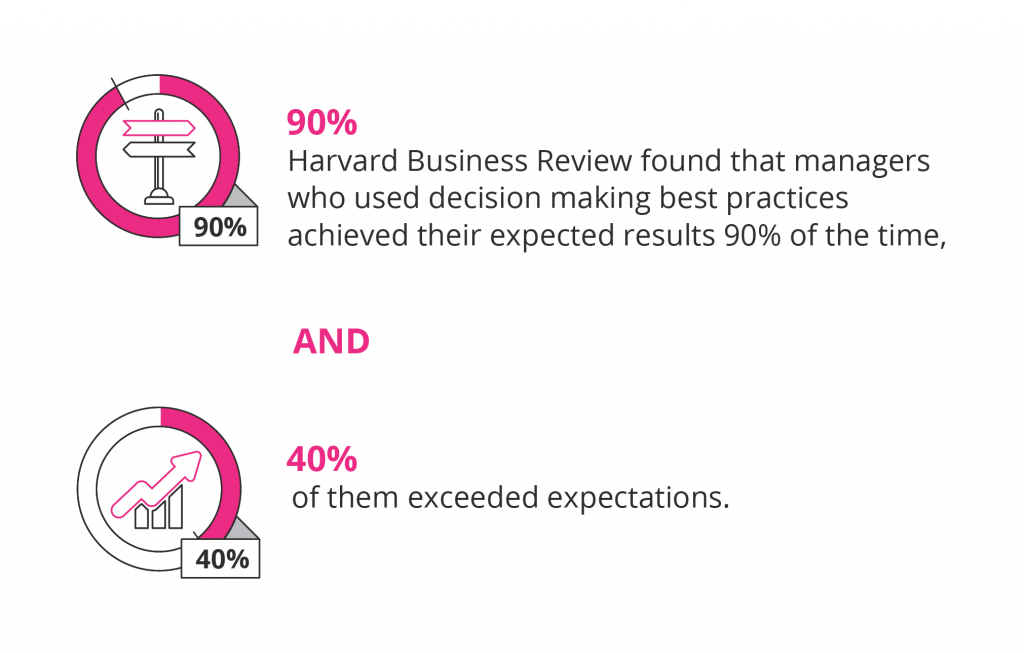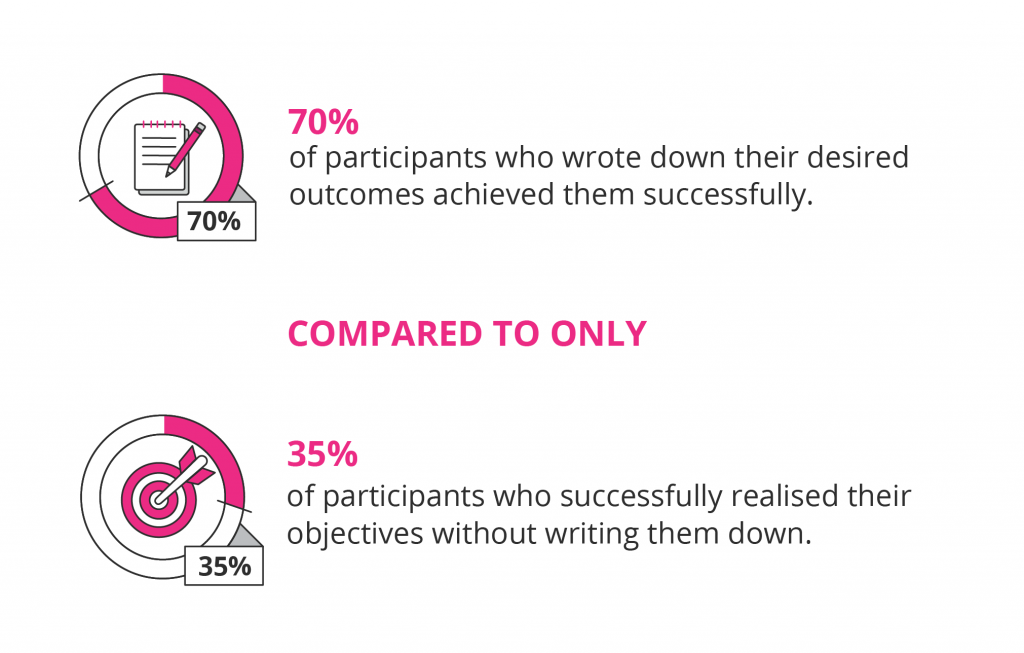5 Ways to make smarter decisions (plus: free template)
Whether you’re making high-level managerial decisions, trying to assess various career opportunities or solving personal dilemmas, following a sound decision-making process is vital.
Harvard Business Review found that managers who used decision making best practices achieved their expected results 90% of the time, and 40% of them exceeded expectations.1

What is the best decision making process? The short answer is there isn’t a rubber stamp solution to every problem.
Each decision comes with its own set of variables, all requiring a different approach to the last. Your best option for making intelligent decisions is to utilise a base framework that can be moulded to each unique situation.
Become more adept at making good decisions by answering the following questions about your problem.
What objective are you trying to achieve with your decision?
A powerful way to ensure you get the best solution to a tough situation is to write your desired objective down.
Professor of Psychology at Dominican University of California, Dr. Gail Matthews found that 70% of participants who wrote down their desired outcomes achieved them successfully, compared to only 35% of participants who successfully realised their objectives without writing them down.2

Follow these three steps to summarise the crux of the issue as briefly as possible:
- Write down the difficult choice you’re trying to make and everything affected by it
- Reread what you just wrote down and identify one key issue
- Remove anything that isn’t directly related to the problem
What alternatives are there to your current preferred solution?
Are you entirely certain the decision you’re contemplating is the best solution to your problem? Have you considered the possibility of other routes to the objective you’re trying to reach?
In a study published in 2012, Thomas Mussweiler and Ann-Christin Posten found that when people compare options available to them they become much more confident in their judgements.3

Added to that, you are more likely to choose something purely because you’re familiar with it.4 Force yourself to think outside of your comfort zone and find the best solution, not just the one you know the best.
Aid your decision-making process by opening up your mind to the possibility of alternative plans of action:
- Visualise the final outcome of your decision
- Think of at least three alternative paths to your outcome
- Compare and contrast these different solutions to find the most viable ones
Which of your goals are influenced by the problem?
Identify the goals that are affected by the decision you’re trying to make.
Only 8% of people of people achieve the goals they set.5 One of the reasons for this is a lack of commitment until the end of the road.
Make sure you align your decision with your goals by writing down between three and five objectives that will be influenced in some way by the decision you’re about the make.
How do your current goals align with each proposed decision?
This is the functional part of the decision-making process.
Before you take the first step after making your decision, make sure that your solution aligns with your goals. As Stephen Covey, author of The Seven Habits of Highly Effective People says, “Begin with the end in mind.”6
Once you’ve nailed down all of your variables, compare each solution against each goal, and give them a score ranging from 1 to 5 (1 being completely aligned, and 5 being not at all aligned).
What is the best decision to make?
Use the free template below to calculate the most effective solution to your problem. Fill out the fields to identify the most appropriate solution.